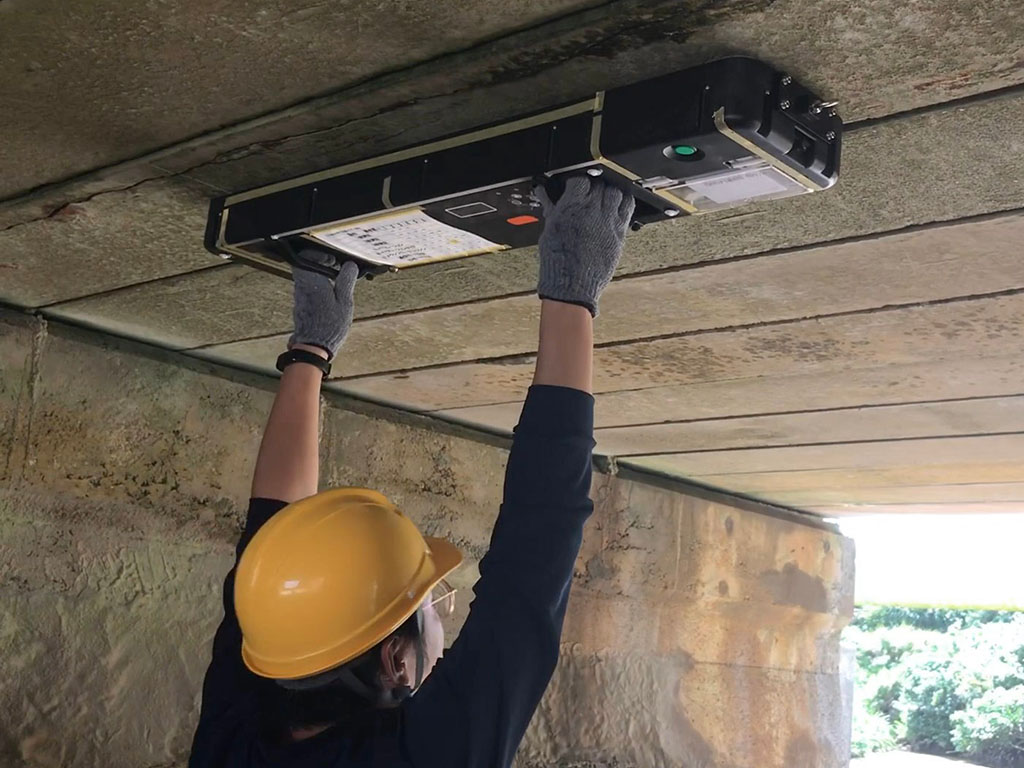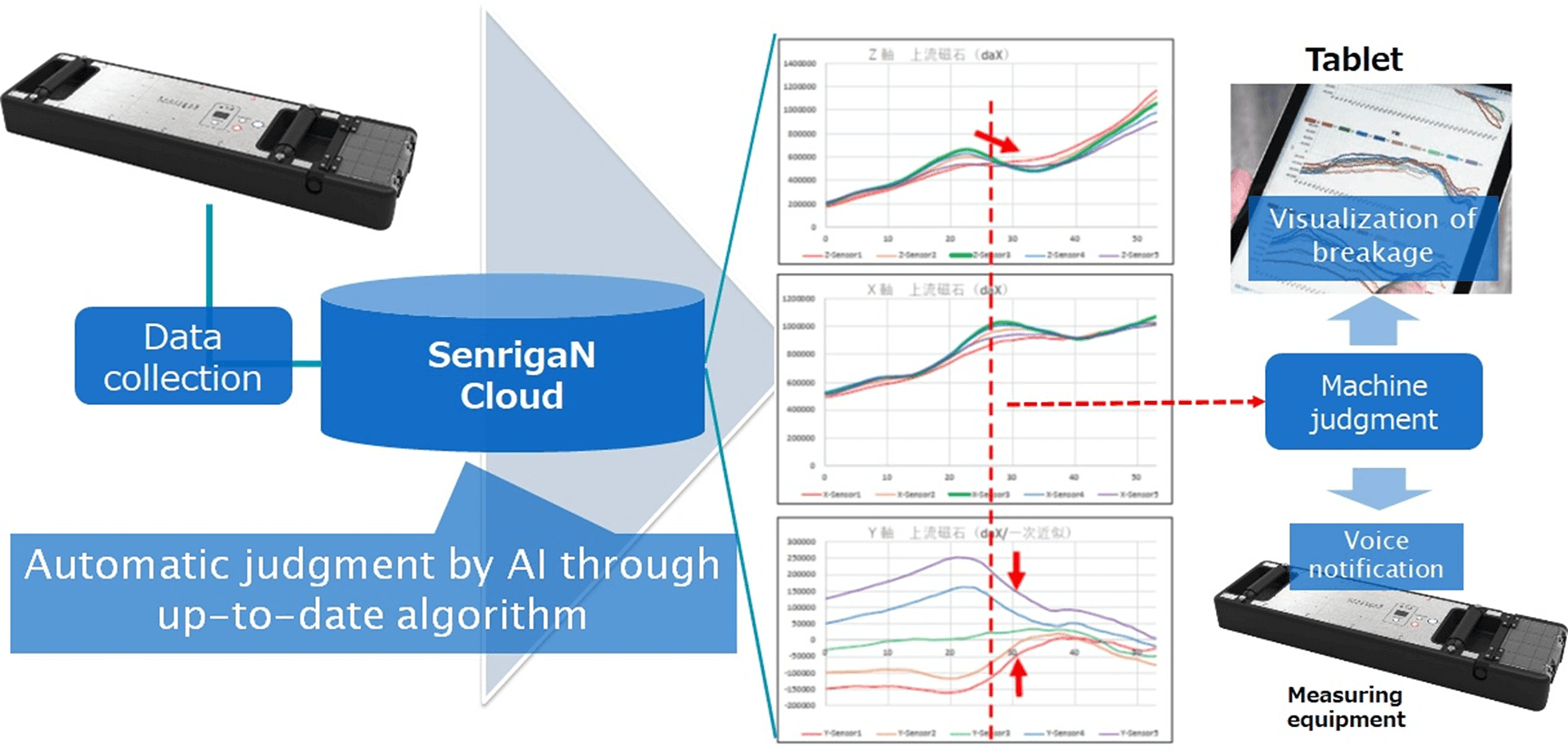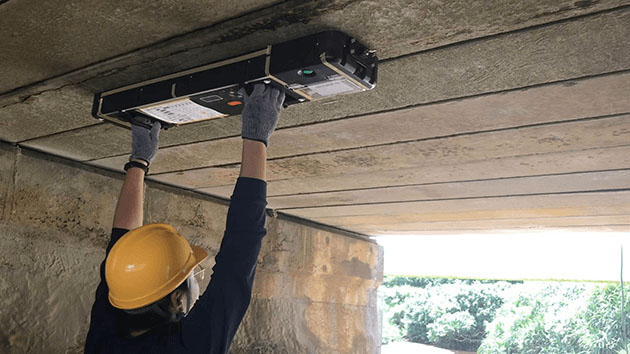News Releases
Konica Minolta’s SenrigaN, a Nondestructive Inspection Solution, Included in the Official Catalog of MLIT, Government of Japan
Promoting Efficient Maintenance to Prevent Failures of Concrete Bridges
November 1, 2021
Tokyo (November 1, 2021) – Konica Minolta, Inc. (Konica Minolta) is pleased to announce that SenrigaN, a nondestructive inspection solution, has been included in the “Inspection Support Technology Performance Catalog (Draft)” (Performance Catalog) of the Ministry of Land, Infrastructure, Transport and Tourism (MLIT), Government of Japan.
Previously, Konica Minolta offered services using SenrigaN on a trial basis, and has now decided to fully enter the business. Through this business, Konica Minolta will promote efficient maintenance to prevent failures of concrete bridges such as PC bridges,*1 and help ensure the safety of traffic infrastructure.
Konica Minolta’s Commitment to Ensuring Social Safety and Security
Konica Minolta aims to become “a company clearly committed to solving social issues” as stated in its Medium-term Business Plan, DX2022. “Ensuring social safety and security” is one of five items of materiality (important issues) that the company is committed to tackling.
With the accelerating deterioration of traffic infrastructure such as roads and bridges, there is a growing need to quickly detect ruptures of steel materials*2 inside concrete bridges, which are likely to result in failure, and carry out efficient maintenance. This requires detecting ruptures of steel materials deep inside, which cannot be detected by visual inspection, by using a nondestructive inspection device. Such nondestructive inspection processes are expected to become the standard.

Konica Minolta offers the SenrigaN nondestructive inspection solution as a simple judgment method for detecting ruptures of steel materials inside concrete structures such as PC bridges. The company aims to establish this solution, which does not require expertise, as one of the infrastructure inspection processes.
Helping to Judge Whether Bridges Should Be Repaired and Take Early Action
SenrigaN generates magnetic forces in steel materials by using a special magnet in its main unit. The flow of the magnetic force is detected by a sensor, and this data is then analyzed by a proprietary algorithm to locate ruptures of steel materials inside bridges of railways, expressways, and general roads in real time. This reveals the state of deterioration and helps judge properly whether a bridge should be repaired or reinforced.

In addition, the device is easily handled by anyone and remote support services and machine judgement make it simple to interpret the measurement data, which helps eliminate delays in grasping the situation due to a shortage of experts. In the future, the measurement process will be automated to help reduce the workload and increase the efficiency of infrastructure inspection.
Market tests in Japan include field operational tests on railway bridges (for Shinkansen bullet trains) and performance verification on actual bridges where salt damage is serious through industry-academia-government collaboration, which involves local governments and universities. SenrigaN has been highly evaluated in these projects. It has also been used for deteriorated bridges managed by the MLIT and local governments, in order to design and carry out repairs for expressways. Market tests have also started in Myanmar, Vietnam, and South Korea.
Creating a Business to Propose Proactive Repairs Based on Prediction
The business will start with renting SenrigaN to inspection companies and consulting engineering companies.
Konica Minolta hopes to expand the business by proactively proposing repairs based on prediction. The company will also expand the business globally, particularly in ASEAN countries where traffic infrastructure in coastal areas has been deteriorated due to salt damage.
At present, SenrigaN can only detect steel materials that have actually ruptured, but Konica Minolta believes it will become possible to predict such ruptures using AI by accumulating and analyzing inspection data. In the future, the company will meet the needs of customers, such as detecting neutralization of concrete and rust development on steel materials, by expanding its lineup of new inspection technologies and devices, thereby allowing deterioration to be detected at an early stage.
Performance Catalog of MLIT
The Performance Catalog was created by the Road Bureau of the MLIT in 2019. This catalog contains performance values of inspection technologies to encourage the active use of new technologies for periodic inspections. The periodic inspection procedures for road facilities, such as bridges and tunnels, were revised in 2019. With the second round of five-yearly periodic inspections under way, MLIT is recommending the use of new technologies, in addition to close visual inspections and hammering tests, to improve operations in the third round, which will commence in FY2024. As part of such efforts, MLIT publicly solicited applications for “inspection support technologies for bridges and tunnels” in line with the revision of the Performance Catalog.
Konica Minolta proposed SenrigaN as an “inspection support technology for bridges and tunnels,” and it was included in the Performance Catalog revised this year.
Contact Information for Customers
Konica Minolta, Inc. Business Innovation Center
senrigan-support@konicaminolta.com
*1:Bridges which use prestressed concrete (PC). In PC, tensile force is applied to embedded steel materials, which are stronger than the reinforcing steel, to reinforce the concrete by compressive stress. As a result, fewer cracks are generated than in reinforced concrete.
*2:Reinforcing steel for reinforced concrete; prestressing steel for prestressed concrete (PC).

